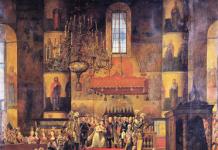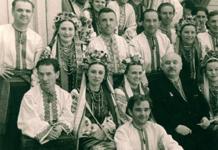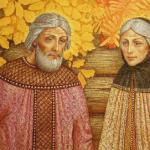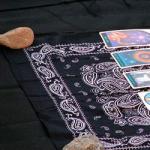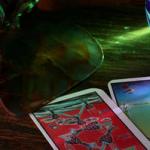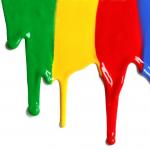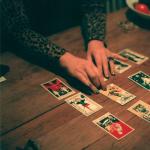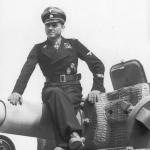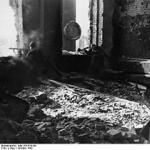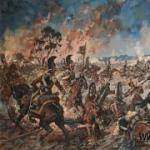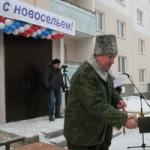On September 11, 1812, merchant Ivan Kuskov founded a Russian settlement in North America - Fort Ross. This was generally the first European settlement north of San Francisco (about a hundred kilometers from this city) and the southernmost point of the advance of Russian pioneers along North America.
Kuskov made his first trip to inspect the area back in 1808, and at the beginning of the next year he dropped anchor in Bodega Bay. Then, during his second campaign in 1811, he explored the surrounding area. He especially liked the site twenty miles from the bay. This small open plateau facing the sea was separated from the rest of the area by several deep gorges running in different directions, so that it was easily defended. In addition, there were pastures, timber growing, running water - the Slavyanka River (later called Russian by the Americans) and the best climate on the coast. Although this site was technically under the jurisdiction of the Spaniards, Kuskov bought it from the Indians, paying three blankets, three pairs of pants, two axes, three hoes and several strings of beads.
The settlement, called Fort Ross, was founded when Ivan Kuskov arrived on the site with 95 Russians and 80 Aleuts. For almost thirty years, the fort served as a stronghold of the Russian-American company, which was engaged in fur-bearing animals and trade on the American continent. The fort was a wooden fortress traditional for Russian architecture, which housed all the necessary buildings. On the territory of the fort, the first church-Orthodox building in California, the Chapel of the Holy Trinity, was erected, which is one of the most important historical, cultural and religious centers of the Russian community of San Francisco. After the Russians left here, the land was resold several times to various owners, but the first buildings of the fort were preserved. Fort Ross is now part of the Sonoma National Wildlife Refuge. There is a museum in the fortress.
On September 11, 1834, the famous Russian publisher Alexei Sergeevich Suvorin was born in the village of Korshevo, Bobrovsky district, Voronezh province. Vladimir Ulyanov-Lenin characterized his life path as follows: “A poor man, a liberal and even a democrat at the beginning of his life’s path, a millionaire, a smug and shameless praiser of the bourgeoisie, groveling before every turn of the policy of those in power at the end of this path.”
Suvorin's father was a state peasant who managed to achieve officer rank and nobility. Alexey Sergeevich graduated from the Mikhailovsky Cadet Corps in Voronezh, but soon left military service; in 1863 he moved to St. Petersburg and became a staff member of the moderate liberal St. Petersburg Vedomosti. Suvorin's book of essays "All sorts" outraged the authorities so much that it was burned, and its author served three weeks in a guardhouse. In 1873, his wife Anna Ivanovna, who bore him five children, was shot by her lover in a room at the Bellevue Hotel in St. Petersburg. Suvorin experienced a spiritual crisis and switched to conservative positions. In 1876, having received a significant loan with the help of friends, he purchased the newspaper “Novoye Vremya”, which soon became one of the most famous publications in Russia. Alexey Sergeevich perfectly established the publishing business and became a millionaire: income was brought in not only by the newspaper, but also by the bookstore and publishing house.
During Suvorin's lifetime, more than one and a half thousand books were published with a total circulation of about 6.5 million copies. Pocket-sized publications in the “Cheap Library” series, as well as yearbooks “All Russia”, “All Moscow”, “All Petersburg” sold well. Suvorin founded the Maly Theater in St. Petersburg and provided significant support to Anton Chekhov, Vasily Rozanov and many other writers. Alexey Sergeevich died on August 24, 1912, and his legacy was nationalized after the revolution.
In 1846, Anna Grigorievna Snitkina was born, married to Dostoevskaya.
“I was not distinguished by beauty, had neither talents nor special mental development,” she admitted. “And despite this, she has earned deep respect and almost worship from such an intelligent and talented person.”
Thanks to Anna Grigorievna, Dostoevsky lived the last and most fruitful 14 years of his life as a human being.
“My dear angel, Anya,” Fyodor Mikhailovich wrote to his wife, “I kneel down, pray to you and kiss your feet. You are my everything in the future—hope, faith, happiness, and bliss.”
In 1882, the writer Boris Zhitkov was born.
Boris Zhitkov did not intend to become a writer. He was simply famous among his friends as a wonderful storyteller. Once, at the request of Korney Chukovsky, Zhitkov wrote down one of his stories. This sealed his fate. Soon Zhitkov’s funny stories for children appeared in magazines: “About an Elephant”, “About a Monkey”, “Mongoose”, “Compass”, “Dime” and others.
“For a person, as for a flower, an animal or a bird, the highest triumph is to be absolutely and impeccably alive,” he said.
On September 11, 1885, David Herbert Lawrence was born - poet, artist, writer and prophet, the most scandalous and indomitable author of the first half of the 20th century. His last novel, Lady Chatterley's Lover, was published in English in its entirety only 30 years after it was written.
“He did not attempt to shock, but, passionately serving his purpose, sought to save us,” wrote John Fowles, “his deepest and most passionate faith was in love.”
September 11, 1923 is the birthday of Grigory Yakovlevich Baklanov, a man of the “military generation”, who in his works about the war highlighted not the political, but the moral aspect, and confronted both his heroes and the reader with the problem of moral choice.
Films about the war based on his scripts - “Salute, Maria!” and “It was the month of May” - were a worldwide success.
Brian De Palma was born in 1940.
He belongs to the so-called “new American wave”, a galaxy of directors including Martin Scorsese, Francis Ford Coppola, Stanley Kubrick. In the late 60s, they set themselves the goal of not only attracting viewers to cinemas, but also showing new possibilities of cinema.
De Palma's first film, the 1962 short film The Awakening of Wotan, brought him several awards. This was followed by several low-budget films in which Robert de Niro appeared on screen for the first time. In 1976, he directed the film Carrie, based on the novel by a then unknown young writer, Stephen King. In his “Scarface,” Al Pacino played one of his best roles, and the film “The Untouchables” became the pinnacle of Sean Connery’s acting career.
The funeral of the disgraced leader of the country was held almost secretly. Only his relatives knew about his death, and the country first learned from a BBC broadcast. After this, the newspapers were allowed to give a short, dry report. The fact is that since October 1964, Khrushchev’s name was under Glavlit’s censorship ban, that is, it was never mentioned in the Soviet press.
On September 11, 1973, a coup d'etat was carried out in Chile - a military junta led by General Pinochet overthrew the legitimate President Salvador Allende, who died during the storming of the presidential palace.
In the late 1960s, Nazi war criminals fugitives from justice flocked to Chile from all over the world. Former SS men served as consultants, experts, and sometimes managers in the junta-established concentration camps at Chacabuco, on the island of Doson, Tierra del Fuego. Although Pinochet and the junta constantly proclaimed themselves “defenders of Christian values” and emphasized their devout Catholicism, thousands of Catholic activists were subjected to repression under the military regime.
In 2001, the largest terrorist attack in human history was committed in the United States. On September 11, three planes flown by terrorists crashed into the skyscrapers of the World Trade Center in New York and the Pentagon building. The fourth crashed in Pennsylvania. The attacks killed those in the buildings and on the hijacked planes. In addition, the disaster claimed the lives of firefighters and police officers, thanks to whose efforts it was possible to save about 30 thousand people. On weekdays, over 55 thousand people worked at the World Trade Center, and the daily number of visitors and tourists reached 150 thousand.
On July 15, 2002, the search for the remains of victims of the terrorist attacks was officially completed. A month later, the first official list of those killed in New York was published. It includes 2,819 people from 80 countries, including three Russians. According to statistics, for every ten dead there are eight men, the average age is forty years. These were predominantly knowledge workers, from software developers to bank employees and insurance workers. Many were at the peak of their careers. About ten people were executives, founders or presidents of companies. At least 59 people served as vice presidents. Of the identified victims, fifteen were under twenty-one years of age, including three three-year-old children.
As a result of the terrorist attack in Washington, when a plane crashed into the Pentagon building, 184 people were killed: 120 employees, as well as 64 passengers and crew members. Another 44 people died on the plane, which was hijacked by terrorists but crashed in Pennsylvania before reaching Washington. The total number of deaths was more than three thousand people, about six thousand were injured.
On September 11, 2002, American airlines were forced to cancel more than three thousand flights scheduled for that day. The reason is the low demand for air travel precisely on the anniversary of the tragedy. Hundreds of flights by airlines in other countries were canceled for the same reason.
Cut Glass Day
Indeed, such a holiday exists, and this is no joke! In 1943, the first Soviet-made cut glass was produced in the city of Gus-Khrustalny. The author of the design is the sculptor of the “Worker and Collective Farm Woman” statue, but there is no documentary evidence of this fact. According to some reports, Vera Mukhina developed such a design specifically for Soviet public catering, and it lived up to expectations - for many years it was registered in soda machines, canteens, and on the railway.
A classic of the genre - a glass with 16 sides, the very first production of the plant. You can find 12-14-18-20 faceted glasses. The price was smelted at the bottom of the first glasses: 7 or 14 kopecks, depending on the size. It should be noted that ordinary glasses without a smooth top rim have been known since the time of Peter 1 - the tsar was given such a glass for drinking alcoholic beverages on a ship.
Enkutatash - New Year in Ethiopia
The only state in the world that uses the Julian calendar lives by its own rules, and today it celebrates the New Year - a wonderful secular holiday. The date of the holiday was determined in ancient times by the Queen of Sheba, who returned from Jerusalem. The holiday is celebrated in an ancient 14th century church, the Church of St. John. The priests conduct services, read psalms and sermons, hymns. And in the evening they light fires from eucalyptus, which is exotic for us, and spruce, which is so familiar to us.
Another church is located near the capital of Ethiopia, Addis Ababa. According to Ethiopian beliefs, fire is a sign of warmth, so the entire celebration develops around bonfires. After the church service at home, Ethiopians treat themselves to injera (white flat bread) and wat (stewed meat). In the evening, everyone goes to visit friends and relatives, and the children spend the money they earn. In addition to being a religious holiday, Enkutatash separates the rainy season and marks the arrival of spring.
Days of Ksharta-Varya (Shahrewar) in India
On this day, real men are congratulated - warriors, blacksmiths and masons. Indians are special people, and their entertainment is special. So, for example, ordeals: for a truly strong man, tin is cast on his chest, and he, having a powerful etheric body, does not even suffer from pain. At the same time, they light the ritual 14 candles and eat rough food.
Teacher's Day in Argentina
The Argentine nation loves this holiday very much; it is a day off for the whole country and is very significant. All teachers are expressed recognition and gratitude, given gifts and honor the memory of President Domingo Faustino Sarmiento, who died on this day, who went down in history as a great educator. It was he who reformed the Argentine education system in the 19th century, founded two public schools - Naval and Military, as well as agronomic and forestry academies. He was also the founder of teacher training schools. In Argentina, teachers are revered not only for teaching knowledge, but also for educating the younger generation.
Folk calendar September 11
Ivan Postny
Today the Orthodox Church commemorates the beheading of John the Baptist. It was he who at one time predicted the coming of the Messiah, baptized Jesus and ended his life as a martyr, at the whim of one of the sinful women. King Herod, the ruler of Galilee, was mired in sins and took a mistress instead of a wife. The righteous elder was given as a reward to Salome, the daughter of Herod's mistress. The saint's head was cut off, but even in this form he continued to denounce sinners. The wrath of God overtook those responsible for the death of the saint - Salome’s head was cut off by an ice floe, and Herod and Herodias were swallowed up by the opening of the earth.
On this day, Orthodox Christians usually fast. You can’t eat anything round; they even try to bake bread of a different shape. They don’t dig potatoes, don’t eat tomatoes, and perform memorial ceremonies in honor of the fallen soldiers who died in battles. After this day, they continue to prepare pickles for the winter. Sometimes fairs are held, but fasting did not allow many temptations, so the auctions were very difficult to endure. The first frosts brought “greetings” from winter. Observations of cranes can show what kind of winter to expect - flocks are flying, which means the autumn will be short and the winter will be early. During Lenten, turnips are harvested - simply, without feasts. They give gifts to the poor and wanderers.
Historical events of September 11
September 11, 1825– on this day in St. Petersburg the famous Mikhailovsky Palace, located on Arts Square, was consecrated. The building is a real masterpiece, created in the best traditions of the Empire style. Currently, the Russian Museum is located in the Mikhailovsky Palace.
September 11, 1832- the Alexander Column (Alexandrian Pillar) was installed - one of the main symbols of St. Petersburg. The grand opening of the famous facility took place in 1834. The Alexander Column is located on Palace Square, its height reaches 47.5 meters, and the top is crowned by an angel. The structure was erected in honor of the heroic victory of the Russian people in the Patriotic War of 1812.
September 11, 1854- in the fight for Sevastopol, seven ships of the Russian fleet were sunk, which blocked the path of the Anglo-French conquerors to the city through the sea route. Crew members and sailors abandoned the sailing ships and opened fire on them from the shore. The Sevastopol Bay became impassable and the enemy was unable to approach the city. A monument to sunken ships was erected at the pier of Sevastopol Bay; it symbolizes the glory and courage of the Russian fleet. For many years, the Sevastopol Bay was cleared of ships located on the seabed at the very approaches to the city, but their wreckage can still be found here today.
September 11, 1943– the Gus-Khrustalny plant produced the first Soviet faceted glass with 16 sides and a volume of 200 milliliters. To be fair, it should be noted that the history of the cut glass began long before 1943; there are assumptions that it was invented during the reign of Peter I, and it was also made in the city of Gus-Khrustalny.
September 11, 2000- one of the peaks of the Central Caucasus Range, by decision of the leadership of North Ossetia, was named in honor of the heroic crew of the Kursk submarine, who, while performing an important training mission, died in the waters of the Barents Sea. The initiators of the event were the climbers who conquered this peak.
Born on September 11
James Thomson(1700-1748) - author of the English anthem "Britain"
Despite many more complex works, James Thomson is famous for his anthem "Britannia". He worked at a time when there was a decline in demands for dramatic art. His works are blank verses - the poem “Freedom”, an allegory written in the Spencerian stanza “Castle of Idleness”, poems about love for nature.
Joseph Kobzon(1937) - Soviet pop singer
Joseph Kobzon became popular a long time ago. Still would! The singer has been on stage for more than 50 years. He captivated listeners with his unique style, deep voice and songs of wonderful composers who wrote them specifically “for him.” The multi-genre repertoire contains patriotic songs about the Motherland and nature, about the war that the singer experienced as a child, and Russian songs of old times. The singer has toured almost the whole world, and today, having finished his concert career, he rarely appears in public, but still does not disappear from TV screens.
Felix Dzerzhinsky(1877 -1926)
His name is associated in the West with the Red Terror, but in Russia he is still a prominent figure, a fanatic of his cause, always going to the end. In government activities after the revolution, it was he who drew attention to the structure of the state apparatus, proposing to change it in order to prevent the dictatorship of one person. Felix Edmundovich died right during the plenum on the state of the country's economy - a nervous breakdown and attack ended in a heart attack.
German Titov(1935 - 2000) – Pilot-cosmonaut of the USSR
German Titov has come a long way from a simple projectionist to a professional pilot who graduated from a flight school. He was accepted into the cosmonaut corps in 1960, and already in the next year, 1061, he flew on the Vostok 2 spacecraft, flying over the Earth more than 700 thousand kilometers in less than 24 hours. One of the craters located on the far side of the Moon bears the name of German Titov.
BIRTHDAYS
William Boyce- English composer.
Dates of life: September 11, 1711 – February 7, 1779.
Valentino Fioravanti- Italian composer.
Dates of life: September 11, 1764 – June 16, 1837.
Friedrich Kuhlau- German-Danish composer and pianist.
Dates of life: September 11, 1786 – March 12, 1832.
Eduard Hanslik- Austrian music critic.
Dates of life: September 11, 1825 – August 6, 1904.
Alexander Sveshnikov- Soviet and Russian conductor, choirmaster, teacher, musical figure. choral conductor. Organized the Moscow Choir School.
Dates of life: September 11, 1890 – January 3, 1980.
Theodor Ludwig Wiesengrund Adorno- German philosopher, sociologist, composer and music theorist.
Dates of life: September 11, 1903 – August 6, 1969.
Bola de Niev- Cuban pianist.
Dates of life: September 11, 1911 – October 2, 1971.
Jacqueline Steiner Jacqueline Steiner is an American folk singer, songwriter and social activist.
Dates of life: September 11, 1924 – January 25, 2019.
Harry Somers- Canadian composer.
Dates of life: September 11, 1925 – March 09, 1999.
Evgeniy Belyaev- Soviet and Russian singer (lyric tenor).
Dates of life: September 11, 1926 – February 21 (22), 1994.
Joseph Kobzon- Russian pop singer (baritone). He recorded on gramophone records and returned to listeners a large number of lyrical and comic songs of the 1930s from the repertoire of V. Kozin, K. Sokolsky, A. Pogodin, G. Vinogradov and others.
Dates of life: September 11, 1937 – August 30, 2018.
Mickey Hart(Michael Steven Hartman) - drummer of the American rock band Grateful Dead.
Date of birth: September 11, 1943.
Gianluigi Gelmetti- Italian conductor and composer.
Date of birth: September 11, 1945.
John Martin- English musician.
Dates of life: September 11, 1948 – January 29, 2009.
Yigal Bashan(Yigal Bashan) is an Israeli singer, songwriter and actor.
Dates of life: September 11, 1950 – December 9, 2018.
Rene Geyer– Australian jazz, soul and R&B singer.
Date of birth: September 11, 1953.
Andrey Zabludovsky– Soviet and Russian rock musician, member of the “Secret” beat quartet.
Date of birth: September 11, 1959.
Victor Wooten is an American virtuoso bass guitarist with extraordinary technique for playing the electric bass guitar.
Date of birth: September 11, 1962.
Moby(Richard Melville Hall) is an American DJ, singer, composer, multi-instrumentalist and performer working in various genres.
Date of birth: September 11, 1965.
Harry Connick Jr.- American actor, singer (crooner), jazz pianist, songwriter.
Date of birth: September 11, 1967.
Gidget Gein(Bradley Mark Stewart) is an American musician and actor.
Dates of life: September 11, 1969 – October 8, 2008.
Lada Dance(Volkova) – Russian pop and jazz singer, actress.
Date of birth: September 11, 1969.
Taraji P. Henson- American actress and singer.
Date of birth: September 11, 1970.
Richard Paul Stephen Ashcroft- British rock musician. He is best known as the vocalist and leader of the British rock band The Verve.
Date of birth: September 11, 1971.
Alexander Bury– bass guitarist of the Russian rock band “Semantic Hallucinations”.
Elephant Man(O'Neill Bryan) - Jamaican musician.
Date of birth: September 11, 1975.
Ludacris(Christopher Brian Bridges) is an American rapper and actor.
Date of birth: September 11, 1977.
In-Grid(Ingrid Emilliana Alberini) is an Italian singer, composer and arranger.
Date of birth: September 11, 1978.
Asuka Kuramochi– Japanese singer, member of the group AKB48.
Date of birth: September 11, 1989.
REMEMBRANCE DAYS
Alexander Gurilev- Russian composer, pianist, violinist and violist. Vocal lyrics occupy the main place in his work.
Dates of life: September 3, 1803 – September 11, 1858.
Henri Benjamin Rabot- French composer and conductor.
Dates of life: November 10, 1873 – September 11, 1949.
William Alvin- English composer.
Dates of life: November 7, 1905 – September 11, 1985.
Erich Leinsdorf- Austrian conductor.
Dates of life: February 4, 1912 – September 11, 1993.
Lornie Green- Canadian actor and singer.
Dates of life: February 12, 1915 – September 11, 1987.
Al Casey- American jazz guitarist.
Dates of life: September 15, 1915 – September 11, 2005.
Antoine Duhamel- French composer, author of music for cult films.
Dates of life: July 30, 1925 – September 11, 2014.
Joe Zawinul– Austrian jazz pianist, composer, founder of Weather Report.
Dates of life: July 7, 1932 – September 11, 2007.
Jimmy Fontana- Italian composer, singer, songwriter and actor.
Dates of life: November 13, 1934 – September 11, 2013.
Peter Tosh(Winston Hubert Mackintosh) - Jamaican singer, guitarist, composer.
Dates of life: October 19, 1944 – September 11, 1987.
EVENTS
1888 - At the opening of an industrial exhibition in Toronto, the world's first recording of a human voice was made.
1943 – the state Ukrainian choir named after Grigory Veryovka was created.
1962 – band musicians Beatles recorded their first British single, “Love Me Do”/“PS I Love You”. Guest musician Andy White played the drums, and producer George Martin entrusted Ringo Starr with only the tambourine.
1963 – recorded the song “All I’ve Got To Do”, which was included in the album “With The Beatles”.
1964 – George Harrison founded Harrisongs.
1979 – in Passaic (New Jersey, USA), the Who performed at the Capitol Theater for the first time since the death of drummer Keith Moon.
1997 – on the day of his 60th birthday, Joseph Kobzon gave a benefit concert in the main concert hall of Russia.
2001 – a terrorist attack occurred in New York, after which she wrote the musical “Masterpiece and Singing Freedom,” which ran on Broadway in 2007.
more information about these musicians and events –.
11.09.2018 08:00
Ukrinform
On this day in 2001, the largest terrorist attack in the history of mankind was carried out in the United States.
The September 11, 2001 terrorist attacks in the United States were a series of terrorist attacks during which suicide bombers in hijacked planes attacked the World Trade Center towers in New York and the Pentagon building in Washington. Since 2002, by decision of the US Congress, September 11 is celebrated in the United States as “Patriot Day”, and since 2009, after the approval of Act 111-13 of the US General Law, the date is called "National Day of Service and Remembrance". On this day, the US national flag (both within the country and abroad) must be flown at half-staff. A moment of silence begins at 8:46 a.m. ET, which is when the first plane hit the North Tower of the World Trade Center in Lower Manhattan. 17 minutes later, a second plane crashed into the South Tower. In less than 90 minutes, the twin towers, in which about 50 thousand people worked daily, fell. At 9:37 a.m., a third airliner crashed into the west façade of the Pentagon. At 10:03 a.m., the fourth plane crashed into a field in southern Pennsylvania. He was heading to the Capitol or the White House, but thanks to the courage of the passengers, who already knew that America was under attack, the terrorists' plan was not destined to come true.
According to data published in the final report of the National Commission on Terrorist Attacks against the United States (9/11 Commission), more than 2,600 people died at the World Trade Center; 125 died in the Pentagon; 256 people died on all four planes. Thus, the death toll exceeded the number of lives lost at Pearl Harbor in December 1941. The unprecedented terrorist attacks that changed America forever were carried out by 19 young Arabs, following orders from Islamists based in Afghanistan.
Since this is not a federal day for the United States, schools and various institutions operate as usual, but many participate in memorial events dedicated to the memory of those killed. The vast majority of Americans still refer to the day simply as 9/11 or 9/11.
Events of the day:

75 years ago (1943) The State Ukrainian Folk Choir was founded, now - National Honored Academic Ukrainian Folk Choir named after G. Verevka. On the same day, the first artistic director and chief conductor were appointed. He became the then researcher at the Institute of Folklore of the Ukrainian Academy of Sciences, Grigory Gurevich Verevka. The staff was also determined - 134 employees (84 singers, 34 folk orchestra artists, 16 ballet dancers). The team was located in Kharkov, on Sumskaya Street No. 61, and the selection of artists began in the same city. The figure of the first leader of the Choir, which now bears his name, is interesting. Grigory Verevka in the history of Ukrainian musical culture of the twentieth century. a unique figure - composer, conductor, music teacher. He personally traveled to villages and towns in search of talent. What else was Grigory Verevka like? Devoted to music and singing. There were no political bosses among his idols - instead, all his life he bowed to Nikolai Leontovich, the Ukrainian composer, author of the brilliant melody “Shchedryk”. He was friends with Pavel Tychina - they knew each other from Chernigov, from a young age. After Verevka’s death, in 1965 Anatoly Avdeevsky became the director of the Choir, who led the group for more than 50 years. Today the National Choir named after G.G. Verevki is the largest Ukrainian professional choir, the true voice of Ukraine. The choir's repertoire ranges from folklore to classical a-capella arrangements and works by contemporary composers; from vocal and choreographic scenes, compositions, folk performances to folk opera.
Anniversaries of the day:
15 6 years since birth ABOUT'Henry(present - William Sidney Porter; 1862-1910), American writer, master of an action-packed short story with an unexpected ending. He wrote about 600 of them. He is the author of the satirical book “Kings and Cabbages.” He created a unique novelistic portrait of New York at the dawn of the era of monopolies and globalization - a diverse, attractive, mysterious and cruel metropolis with its four million “little Americans.” The images of clerks, saleswomen, tramps, unknown artists, poets, actresses, cowboys, small adventurers, farmers are so vivid that they remain in the reader’s memory forever. O'Henry was a very popular writer of the first quarter of the twentieth century, he was compared to the new French classic Maupassant ("Yankee Maupassant"). The artist's prose is characterized by laconicism, swiftness, surprise, and the ability to amaze; it easily breaks down into quotes: “There will be songs on your ranch, but you won’t hear them,” “He was weak, like a vegetarian cat,” “He took every dollar in the hand of another as a personal insult,” “A mouth of this shape and such size, that the eye involuntarily looked for the inscription above it: “For letters,” “She was about the height of an angel,” “He was fresh, like a young radish, and simple, like a rake.” Peter Weil, in an essay dedicated to O’Henry, writes: “He is perhaps the only writer who evokes in me, not to say a tear, but a urge for it. O’Henry doses sentiments in such a way that when everything ends with a wedding or a feat, there is no irritation, there is gratitude - and not even to him, not to the writer, but to life itself for remembering justice. O'Henry restores confidence in life." The writer died on June 5, 1910 from cirrhosis of the liver (he abused whiskey).
11 5 years since birth Theodor Adorno (1903-1969), German philosopher, sociologist, musicologist. In the early 1940s, he conducted a study in the United States of the “authoritarian personality” as a socio-psychological prerequisite for fascism. Author of “Philosophy of New Music”, many articles on musical topics, two wonderful essay monographs on Richard Wagner and Gustav Mahler. Theodor Adorno provided musical advice to Thomas Mann when he wrote his novel Doctor Faustus. Anyone who does not know this name, has not read the works, has at least heard the phrase: “Is it possible to write poetry after Auschwitz?” The replica belongs to Theodor Adorno.

Celebrating his birthday today Anatoly Krivolap (1946), Ukrainian artist, master of non-figurative painting and landscape, one of the most famous and most expensive contemporary Ukrainian artists. And simply - an unsurpassed magician of color, because he can embody more than 80 shades on canvas of red alone! Anatoly Krivolap was born in Yagotin, Kyiv region. He graduated from the capital's State Art Institute (now an academy), faculty of monumental painting. Anatoly’s father did not consider painting a serious matter for a man, so he was skeptical about his son’s passion for painting. Mother said: “study well, behave well so that your neighbors don’t complain, and your profession and wife are your choice.” In the early 90s, Krivolap participated in the art association “Picturesque Reserve”. Its members were Alexander Zhivotkov, Mark Geiko, Tiberiy Silvashi. After graduating from university, the artist experimented for almost 20 years, trying to find his way. Finally found it. When in 1989 his first red landscape, “Crimson Heights,” was exhibited at an exhibition at the House of Artists, everyone immediately drew attention to the painting - it stood out so much among other works. Krivolap had exhibitions in the USA, Germany, and France. His paintings are exhibited in the National Art Museum of Ukraine, museums in Austria, Great Britain, and Japan. The artist’s works have repeatedly set world records for sales of contemporary Ukrainian art on the international art market. In June 2013, the canvas “Horse. Evening" at auction in London was sold for $186,200. In 2012, Anatoly Krivolap became the laureate of the Shevchenko Prize for a cycle of 50 works “Ukrainian Motif”. The artist lives and works in Kyiv and the village of Zasupoevka, Yagotinsky district. He is married, raised two children, and is the grandfather of four grandchildren (all boys). “I’ve never had an interest in faces. I once thought that human feelings were the most powerful thing. When I moved to the village, I realized: nature has more feelings. I’m listening to her.” And Anatoly Krivolap never painted any foreign landscape - Spanish, French, Italian - only Ukrainian. The artist believes that foreign beauty is uninteresting. “In Ukraine, I sit under a bush, the wave hits like a tsunami, and I can already work. Abroad I perceive the landscape with my eyes, at home with my soul.” And he also notes: “I don’t know what “patriot” means. But I know that I could not live in another country. I am Ukrainian".
Death anniversary:

4 4 years from the date of death Nikolai Fedorovich Yakovchenko (1900-1974), Ukrainian actor. He worked in theaters in Simferopol, Cherkassy, Chernigov, Dnieper, Kharkov, and since 1927 (with interruptions) - in the Kiev Ukrainian Drama Theater named after. Ivan Franko. He starred in the films: “On the Steppes of Ukraine”, “The Night Before Christmas”, “Martin Borulya”, “Shelmenko the Batman”, “Pharaohs”, “Chasing Two Hares”. On May 27, 2000, a monument to the actor was erected in the park next to the Ivan Franko Theater (sculptor Vladimir Chepelik, architect Vladimir Skulsky).
11.09.2017 08:00
Ukrinform
On this day in 2001, the largest terrorist attack in the history of mankind was carried out in the United States.
The September 11, 2001 terrorist attacks in the United States were a series of terrorist attacks during which suicide bombers in hijacked planes attacked the World Trade Center towers in New York and the Pentagon building in Washington. Since 2002, by decision of the US Congress, September 11 is celebrated in the United States as “Patriot Day”, and since 2009, after the approval of Act 111-13 of the US General Law, the date is called "National Day of Service and Remembrance". On this day, the US national flag (both within the country and abroad) must be flown at half-staff. A moment of silence begins at 8:46 a.m. ET, which is when the first plane hit the North Tower of the World Trade Center in Lower Manhattan. 17 minutes later, a second plane crashed into the South Tower. In less than 90 minutes, the twin towers, in which about 50 thousand people worked daily, fell. At 9:37 a.m., a third airliner crashed into the west façade of the Pentagon. At 10:03 a.m., the fourth plane crashed into a field in southern Pennsylvania. He was heading to the Capitol or the White House, but thanks to the courage of the passengers, who already knew that America was under attack, the terrorists' plan was not destined to come true. According to data published in the final report of the National Commission on Terrorist Attacks against the United States (9/11 Commission), more than 2,600 people died at the World Trade Center; 125 died in the Pentagon; 256 people died on all four planes. Thus, the death toll exceeded the number of lives lost at Pearl Harbor in December 1941. The unprecedented terrorist attacks that changed America forever were carried out by 19 young Arabs, following orders from Islamists based in Afghanistan. Since this is not a federal day for the United States, schools and various institutions operate as usual, but many participate in memorial events dedicated to the memory of those killed. The vast majority of Americans still refer to the day simply as 9/11 or 9/11.
Today Orthodox Christians venerate Beheading of the Prophet, Forerunner and Baptist of the Lord John. For all Christians, this is a day of strict fasting, prayer and mention of the violent death of the one who prepared thousands of people to meet Christ. According to the New Testament, on this day the Prophet and Baptist of the Lord John were executed. This happened during a noisy celebration of the birthday of the ruler of Galilee, Herod Antipas. Many people gathered to visit the ruler in the palace: nobles, captains of thousands and elders. John the Baptist was in prison at that time - Herod threw the prophet into prison for denouncing the king of adultery - during the life of his brother Philip, he married his wife, Herodias. Herodias, a treacherous and vindictive woman, was especially angry about this. She began to ask Herod to kill John. But Herod did not take her request into account and did not dare to kill John - first of all, he was afraid of human rumor, because John was considered a great prophet, a holy man. But on this day, Herodias’s daughter Salome (Herod’s stepdaughter) danced in front of the guests and pleased the king so much that he recklessly promised to give her anything, even half of his kingdom. But the girl, trained by her mother, asked her stepfather for an unusual and terrible gift: the head of John the Baptist on a platter. The king was upset at first, but for the sake of the oath and those who were with him, he did not want to refuse her. The warrior went to prison, cut off the prophet's head, gave it to the girl, and she gave it to her mother. John's disciples, having learned about this, came, took his body and buried him. This sad gospel story served as an impetus for the emergence of a huge number of works of world art (especially fine art). Among the people, a number of traditions are associated with this day. Usually on this day they did not work, especially not to cut with a knife or ax any round vegetable that resembled a head - cabbage, beets, potatoes. They ate only Lenten dishes, and some even fasted. Potatoes were boiled in their jackets, pumpkins were baked, and the bread was just broken off. From that day onwards the Polishchuks were going on a wolf hunt.
Anniversaries of the day:
155 years since the birth of O’Henry (present - William Sidney Porter; 1862-1910), American writer, master of an action-packed short story with an unexpected ending. He wrote about 600 of them. He is the author of the satirical book “Kings and Cabbages.” He created a unique novelistic portrait of New York at the dawn of the era of monopolies and globalization - a diverse, attractive, mysterious and cruel metropolis with its four million “little Americans.” The images of clerks, saleswomen, tramps, unknown artists, poets, actresses, cowboys, small adventurers, farmers are so vivid that they remain in the reader’s memory forever. O'Henry was a very popular writer of the first quarter of the twentieth century, he was compared to the new French classic Maupassant ("Yankee Maupassant"). The artist's prose is characterized by laconicism, swiftness, surprise, and the ability to amaze; it easily breaks down into quotes: “There will be songs on your ranch, but you won’t hear them,” “He was weak, like a vegetarian cat,” “He took every dollar in the hand of another as a personal insult,” “A mouth of this shape and such size, that the eye involuntarily looked for the inscription above it: “For letters,” “She was about the height of an angel,” “He was fresh, like a young radish, and simple, like a rake.” Peter Weil, in an essay dedicated to O’Henry, writes: “He is perhaps the only writer who evokes in me, not to say a tear, but a urge for it. O’Henry doses sentiments in such a way that when everything ends with a wedding or a feat, there is no irritation, there is gratitude - and not even to him, not to the writer, but to life itself for remembering justice. O'Henry restores confidence in life." The writer died on June 5, 1910 from cirrhosis of the liver (he abused whiskey).
114 years since birth Theodor Adorno (1903-1969), German philosopher, sociologist, musicologist. In the early 1940s, he conducted a study in the United States of the “authoritarian personality” as a socio-psychological prerequisite for fascism. Author of “Philosophy of New Music”, many articles on musical topics, two wonderful essay monographs on Richard Wagner and Gustav Mahler. Theodor Adorno provided musical advice to Thomas Mann when he wrote his novel Doctor Faustus. Anyone who does not know this name, has not read the works, has at least heard the phrase: “Is it possible to write poetry after Auschwitz?” The replica belongs to Theodor Adorno.

Celebrating his birthday today Anatoly Krivolap (1946), Ukrainian artist, master of non-figurative painting and landscape, one of the most famous and most expensive contemporary Ukrainian artists. And simply - an unsurpassed magician of color, because he can embody more than 80 shades on canvas of red alone! Anatoly Krivolap was born in Yagotin, Kyiv region. He graduated from the capital's State Art Institute (now an academy), faculty of monumental painting. Anatoly’s father did not consider painting a serious matter for a man, so he was skeptical about his son’s passion for painting. Mother said: “study well, behave well so that your neighbors don’t complain, and your profession and wife are your choice.” In the early 90s, Krivolap participated in the art association “Picturesque Reserve”. Its members were Alexander Zhivotkov, Mark Geiko, Tiberiy Silvashi. After graduating from university, the artist experimented for almost 20 years, trying to find his way. Finally found it. When in 1989 his first red landscape, “Crimson Heights,” was exhibited at an exhibition at the House of Artists, everyone immediately drew attention to the painting - it stood out so much among other works. Krivolap had exhibitions in the USA, Germany, and France. His paintings are exhibited in the National Art Museum of Ukraine, museums in Austria, Great Britain, and Japan. The artist’s works have repeatedly set world records for sales of contemporary Ukrainian art on the international art market. In June 2013, the canvas “Horse. Evening" at auction in London was sold for $186,200. In 2012, Anatoly Krivolap became the laureate of the Shevchenko Prize for a cycle of 50 works “Ukrainian Motif”. The artist lives and works in Kyiv and the village of Zasupoevka, Yagotinsky district. He is married, raised two children, and is the grandfather of four grandchildren (all boys). “I’ve never had an interest in faces. I once thought that human feelings were the most powerful thing. When I moved to the village, I realized: nature has more feelings. I’m listening to her.” And Anatoly Krivolap never painted any foreign landscape - Spanish, French, Italian - only Ukrainian. The artist believes that foreign beauty is uninteresting. “In Ukraine, I sit under a bush, the wave hits like a tsunami, and I can already work. Abroad I perceive the landscape with my eyes, at home with my soul.” And he also notes: “I don’t know what “patriot” means. But I know that I could not live in another country. I am Ukrainian".
Death anniversary:

43 years from the date of death Nikolai Fedorovich Yakovchenko (1900-1974), Ukrainian actor. He worked in theaters in Simferopol, Cherkassy, Chernigov, Dnieper, Kharkov, and since 1927 (with interruptions) - in the Kiev Ukrainian Drama Theater named after. Ivan Franko. He starred in the films: “On the Steppes of Ukraine”, “The Night Before Christmas”, “Martin Borulya”, “Shelmenko the Batman”, “Pharaohs”, “Chasing Two Hares”. On May 27, 2000, a monument to the actor was erected in the park next to the Ivan Franko Theater (sculptor Vladimir Chepelik, architect Vladimir Skulsky).

